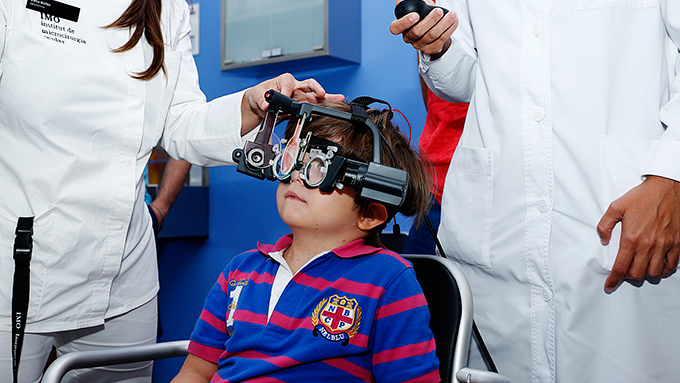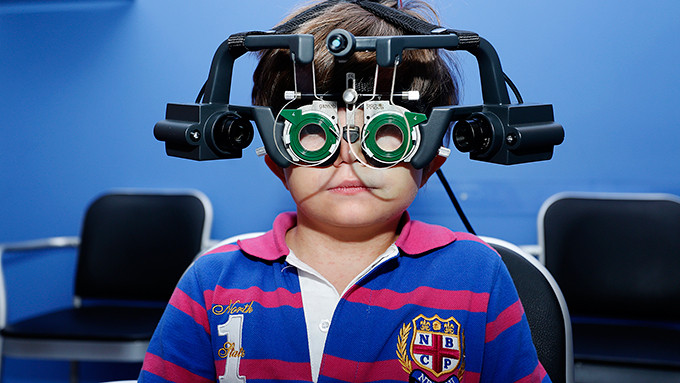IMO’s Paediatric Ophthalmology, Strabismus and Neuro-Ophthalmology Department has just introduced a ground-breaking device to its diagnostic service consisting of a pair of glasses with two side-mounted infrared cameras which can record the movements of the eye with great precision. By doing so, it can create a comprehensive map of the eye deviation and makes it possible to obtain an objective measurement of the strabismus – a disorder that affects 4% of the population, especially children.
A new system that provides a lot of additional information
As explained by Elena Núñez, an optometrist at IMO, “the Gazelab videoculograph provides us with a lot of additional information compared to traditional methods, such as the Lancaster Test or prisms. With the new system, we can measure the exact deviation value in all gaze positions and detect latent or intermittent strabismus, not only the manifest kind”.
Another advantage is that, by speeding up and making the taking of measurements easier, the test is much faster and more comfortable for patients, and less dependent on their cooperation. Because of this, it “opens up the possibility of examining paediatric patients with strabismus – usually from the age of six – as it can be performed in 10-15 minutes and does not require the child remaining still throughout the test”, says Elena Núñez.
Strabismus, a very common condition in childhood
Although it can also occur in adulthood, strabismus is one of the most typical eye conditions in childhood and, in these cases, one of the most common causes of amblyopia. As explained by Dra. Ana Wert, a paediatric ophthalmology specialist at IMO, “the loss of parallelism between the eyes causes children’s brains, which have a great capacity to adapt, to suppress the vision of one eye to avoid seeing double”.
If amblyopia develops, the vision of the “lazy eye” has to be restored by covering the good eye with a patch and, when there is a refractive error associated with strabismus, the first step is to treat it with optical correction. Even so, the ocular deviation can persist and it might be necessary to perform a surgical procedure to strengthen or weaken the oculomotor muscles responsible for the deviation. Whatever the case, Dr Wert stresses that “to properly correct childhood strabismus, it is essential to detect it before the age of seven because, after this age when the eye completes its development, there is no possibility of restoring lost vision if amblyopia has occurred”.
A reliable diagnosis, key to successful treatment
Hence the importance of being able to reliably measure strabismus at as early an age as possible, something that until now was not offered by the usual diagnostic tests: “Children naturally get tired of concentrating and remaining still for a long time and therefore stop cooperating,” says Elena Núñez. Because of this, “the precise and non-subjective data provided by the new videoculograph is a great help since it not only allows us to make a better diagnosis, it also enables us to monitor better in order to assess the patient’s progress after treatment”, adds Ana Wert.
A firm commitment to technological innovation
Moreover, especially in the case of surgery, this information contributes to greater effectiveness of the procedure. “Despite being an operation with a high success rate (90%), poor quality measurement can lead to surgical failure. For this reason, IMO is committed to expert application of the latest technological innovations in surgery and, initially, in the consulting room, the pioneering introduction of instruments such as Gazelab”, concludes IMO ophthalmologist.

